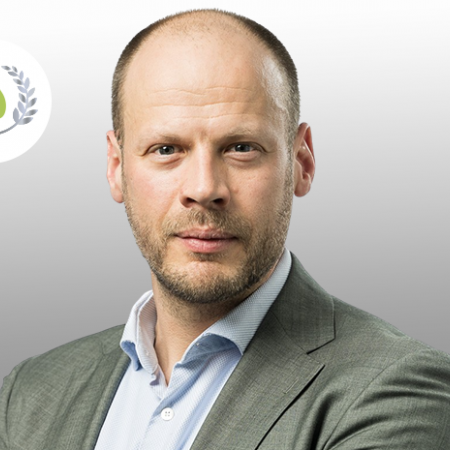July 13, 2023
Global Head of Pulses at Viterra and newly appointed GPC Board member Will Watchorn on the future of processing, the threat of El Niño and what’s on the cards for feed demand in 2023


Viterra is a long-term supporter of GPC and of the pulse industry; Will replaces his colleague Saurabh Bhartia on the Board of Directors following his appointment at the Pulses 23 convention in Sydney this May. “I’m keen to start to contribute and intrigued to see how it all works,” he said of the Board role, adding: “I’m very much looking forward to working with Vijay Iyengar.”
Value-added is a growing sector although Will is realistic about its progress, particularly in regards to the potential for yellow pea processing. “The growth that was forecast hasn’t come. I feel we haven't found the ‘Apple’ of the pulse processing business yet - it’s still quite exploratory. We need to continue working with the consumer to see how best to add value.”
He is enthusiastic about other opportunities for pulses in the future of food: “There are some synergies between bean markets and beef markets, for example, and this idea of using pulses as an extender. That type of collaboration has a lot of opportunities and that’s the entrepreneurial spirit that will carry this sector forward.”
This year, Will says, Chinese demand will be key in shaping the feed landscape with Russia an increasingly important player.
“There’s a substantial crop in Russia - the problem is getting it out and finding consumers willing to use it who can also pay for Russian cargo, which is still an issue for some countries. I will say we are very close to feed parity in China today and Russian peas are competitive for feed in certain areas globally. It’s currently the cheapest origin but there is a constraint on logistics.”
By the end of April, Russia had exported around 18 thousand tonnes of peas to China and there are more shipments expected. “The Chinese have taken containers to see if there is acceptability,” said Will. “There are still some markets in China that are reluctant to use Russian product, which means there is still a home for Canadian, US and French product.”
With Statistics Canada June numbers predicting reduced pea and lentil acreages, competition from Russia could potentially get even stronger.
“It’s all to play for in the coming 4-5 weeks.” said Will. “We’re looking at a smaller area in Canada and a low gross margin for the farmer versus other products. Conditions are not ideal currently. The crop can be made or broken depending on weather cycles. Russia is very close to harvest; little can impact most of the peas in the Southern zone but the Northern zones could still be affected, for example in Siberia.”
It’s certainly going to be an interesting year for red lentils. Add the lower Canadian acreages to El Niño and there is potential for the balance sheet to get very tight.
“We’re looking at potential production issues in Canada and Australia but currently Canada is more concerned with the here and now. In Jan/Feb we thought we’d see El Niño in June/July, but now we’re seeing it deferred. The reality is that the longer we push this conversation forward, the less threat there is to this year’s crop. We also have to mention there’s a positive IOD going on. That makes it very difficult to predict, particularly for the Indian monsoon.”
“We’re looking at potential production issues in Canada and Australia but currently Canada is more concerned with the here and now.”
If the Stats Can numbers are right, Will expects a tight supply situation, regardless of weather: “We’ve shipped the crop in Canada and Australia and if we don’t produce more, we’ll have to consume less. There are no heavy inventories at destinations outside of India but India is consuming more than it’s ever consumed.”
Adding to the uncertainty is buyers buying spot, particularly in countries with reduced access to foreign reserves: “Just in time inventory and buyers not buying forward means if we have production hiccups, it could spike quite quickly.”
Does he see the forex situation improving? “Pakistan got a 3 billion dollar loan from the IMF. To me, that’s good news. Food security is important. The IMF does want to decouple from the subsidy programs they give. As for inflation, in a lot of these countries it’s a dollar problem. So this is keeping buying interest suppressed or delayed.”
Red lentils also have a story with pigeon peas. Markets here, Will indicated, are also dependent on what Africa produces and how seeding in India and Myanmar pans out as well as the ever-important weather patterns: “The Indian government numbers have shown the crop to be disappointing. If there’s a good monsoon, prices are high - the problem probably goes away early 2024. But it’s a big ‘if’.”
India saw a change in its trade policy last month with the removal of retaliatory tariffs on US chickpeas and peas, showing, Will points out, a different approach to trade from recent years and a renewed importance on food security.
“India has done a huge amount to open up and give clarity to the trade and its exporting countries. That has to be recognized as a fantastic move: being more proactive with supplying countries and engaging with key stakeholders all the time, even when they don’t necessarily need them - it’s more long-term planning. That way, when there’s a shortfall, there’s options. China is doing it on peas, that’s why they’re buying from Russia.”
In Europe, Will doesn’t see a lot of change in pulse acres: “We’re just coming into harvest in France and cereal yields seem OK for now. Northern Europe and the Baltics have some dry patches, particularly in Lithuania, which is more of a concern for spring crops like faba. It’s looking like the UK will have similar crop numbers year on year.” In the Baltics, he expects slightly lower yields than last year. Like in North America, it’s all to play for in the coming months.
“One of the things we continue to follow up with consumers is the desire for non soy-based animal product. In Germany, feeding pigs from non soy-based protein is a growing market. There’s also an expanding aquaculture sector in Europe using faba as one of the main components in salmon food. That’s also a growing market.”
Elsewhere in Europe, Will highlighted an emerging market in peas: “Romania is looking to have one of the best crops in a long time this year due to good weather - it’s coming back from years of having almost no exportable surplus. That is one country that has benefited from good weather this year as last year they were affected by drought.”
“Romania is looking to have one of the best pea crops in a long time this year due to good weather.”
Is he seeing higher pea acreages in key European producers to fill the gap left by Ukraine? “No. The Romanian increase is just coming from the yields predicted. The Russian pea crop is basically unchanged - still high.”
At Pulses 23, some analysts predicted a shift onto pulses and oilseeds from grains in 2024/25 but Will is hesitant to endorse this:
“There are constraints for the farmer; they need markets. Will we see a wholesale change? If prices go up, yes the farmers will plant more. How much more is hard to say. When the war in Ukraine began, we saw a spike in fertilizer but it didn't lead to an increase in pulse acreages because the gross margins for wheat more than made up for it.”
After several years of upset further exacerbated by the war in Ukraine, it seems like ocean freight rates are finally back to normal. “We’re back to pre-Covid levels on bulk and container vessels. There’s more availability. It’s keeping the cost down for the consumer as well.”
Inputs, Will indicates, are also at normal levels. So where are we still seeing the impact of the war?
“There are still massive delays in the Black Sea and continued discussions around the Grain Corridor. The Black Sea region is a very important supplier of peas and Ukrainian supply has been minimal.”
For Will, collaboration within the industry is key. “We’re all playing the same game and we need to play it together,” he said. “The work GPC does on increasing industry knowledge is great. The more transparent we are as an industry, the more we can pull in big players.”
He credits consistency, too, as a key driver for the industry, pointing to the significance of Codex, which turns 60 this year, in keeping trade open and adaptable: “As we work closer together, we need Codex - particularly as we have an eye on the future for what the consumer wants to do. They lead, we follow and we need to be able to pivot if the consumer wants things like meat produced from non-soy-based feed, for example.”
Disclaimer: The opinions or views expressed in this publication are those of the authors or quoted persons. They do not purport to reflect the opinions or views of the Global Pulse Confederation or its members.